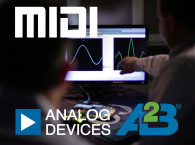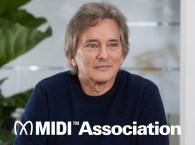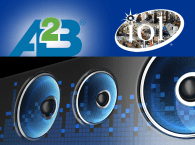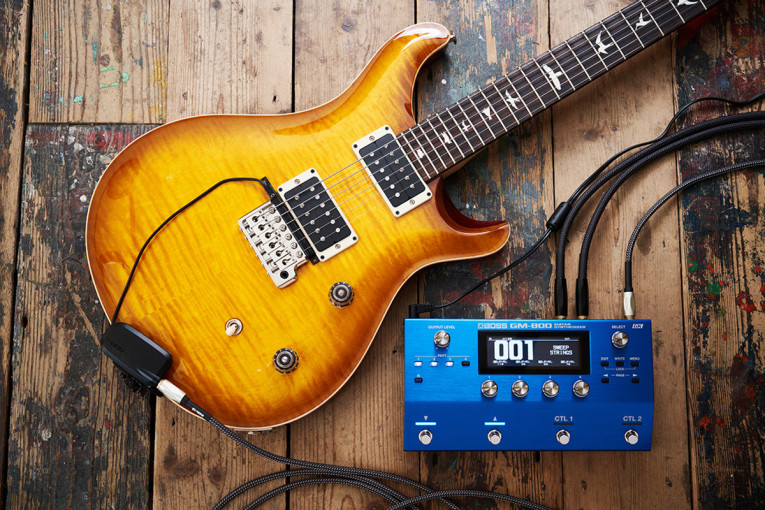
Analog Devices' A2B technology is the "secret sauce" connecting guitar and bass synthesizers and divided pickups for guitars and bass. Roland Corporation originally announced this technology for the BOSS brand in July 2023 and the range of solutions continues to expand. A2B has proven an ideal multichannel platform for an application that depends upon critically low latencies and robustness - and this has simply not been available in the digital domain, until now.
The Digital Serial GK solution, enabled by A2B, is the first guitar synthesizer offering digital connectivity in Roland’s history. For Analog Devices, this is also the first case of A2B adoption in a synthesizer, demonstrating the extreme versatility of the technology.
Since announcing the BOSS GR-500, the world’s first guitar synthesizer in 1977, Roland has generated a pipeline of innovative products including guitar/bass synthesizers. The challenge for such applications has always been the need to adapt prized musical instruments with a dedicated pickup and controller system that connects to the synth module. This was done originally via Roland's own 24-pin interface, which enabled also MIDI control, and was maintained for years in subsequent guitar/bass synth models.
Gradually, Roland evolved the system, and in 1986 it launched the GK-1 Synthesizer Driver with a MIDI output, which allowed support for different sound modules. From that moment, the popularity of Roland's guitar synth pickups exploded, although Roland never evolved the physical interface itself. Only in 2020 with the introduction of the advanced BOSS SY-1000 guitar synth, Roland changed the pickup to a 13-pin interface, delivering improved tracking and less latency. Also, the GK 13-pin DIN cables and connectors could be used with a divided input, for blending guitar/bass and synth sounds.
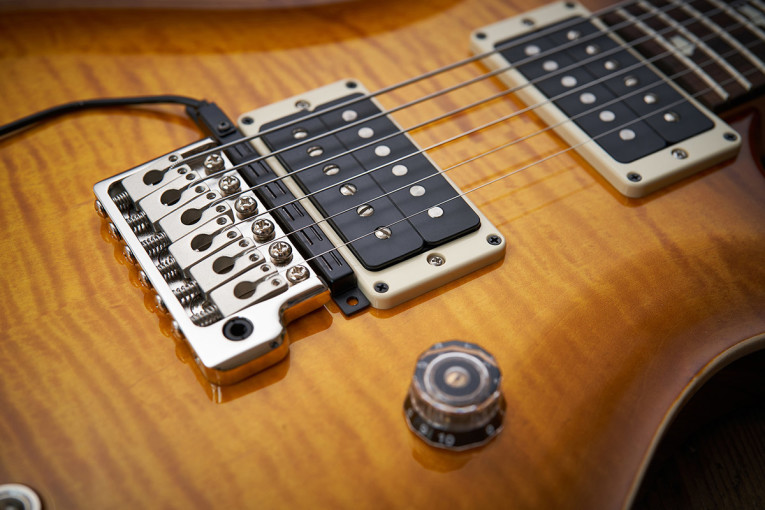
The new Roland GK-5 and GK-5B (for bass) divided pickups implement a new Digital Serial GK method using A2B instead of the analog 13-pin cable. In this newly introduced Digital Serial GK interface, the connector size is half the legacy connector size, which has been deployed on various types of guitars. With the evolution from analog to digital, Roland improved the reliability of the data transmission, which is a critical aspect in musical performance.
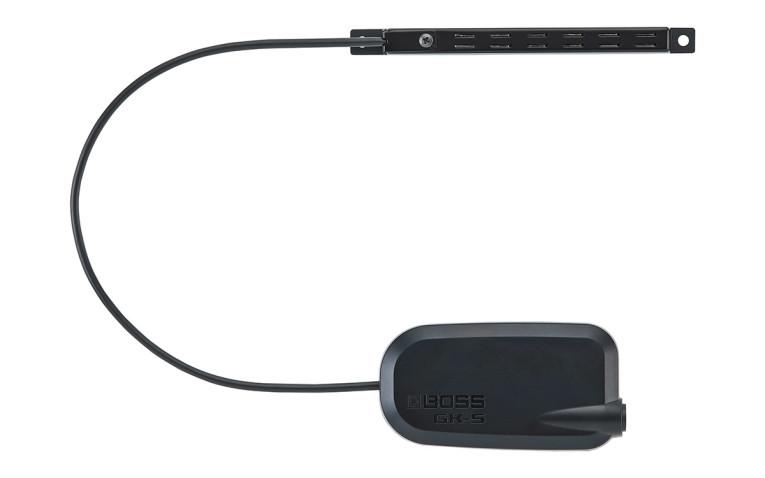
Analog Devices also expects that A2B will continue to be embraced in the musical instrument market, along with the growing number of studio and stage applications. The possibilities of A2B as a high bandwidth, bidirectional digital audio bus, capable of carrying real time audio, MIDI, SPI, I2C, GPIO and power across a simple twisted-pair cable makes it a unique proposition for those markets - where plug-and-play and low cost is critical.

A2B is able to daisy-chain multiple microphones, musical instruments, and other sound sources with speakers and audio mixers and recording equipment (supporting up to 32-bit/96kHz), replacing a bundle of cables while preserving audio quality. This strong feature set is what enabled A2B to expand beyond automotive applications and into consumer applications such as musical instruments and professional audio equipment for the studio, stage and live sound.
Increasingly, A2B is being deployed as a plug-and-play alternative to complicated audio networking protocols for multichannel audio, which continue to suffer from the lack of an industry standard. A2B provides all the metrics that manufacturers have been targeting in Ethernet systems - including attempts to go back to layer 2 solutions like AVB - being deterministic, much more flexible, and lower cost. Multiple manufacturers already provide A2B bidirectional bridge solutions from USB or Dante, as an example.

In a single A2B cable using the latest Analog Devices AD2437 transceivers, developers can leverage a high-bandwidth, bidirectional, digital audio bus capable of distributing 32 channels of 24-bit/48kHz audio and MIDI control data together with clock and power over a single, unshielded twisted-pair wire (connectors can be also the familiar 1/4 jacks or XLRs, depending on the application environment). And the technology enables the development of advanced, feature-rich and cost-effective audio and MIDI LAN systems in a variety of musical instrument and pro audio applications.
The emergence of MIDI 2.0 make A2B an ideal candidate for the next generation of guitar synthesizers and effects, electronic drums, digital keyboards, performance pads, sequencers, and small format audio mixers. MIDI 2.0 combined with multichannel digital audio over low-cost cables is exactly what the next generation of performance instruments and workstations requires.
At NAMM 2023, Analog Devices already showcased a Yamaha QL1 digital mixing console communicating with two Korg synthesizers all via A2B. And A2B is now supported by an ecosystem of silicon partners, ODMs, and design partners, including NVIDIA, Qualcomm, Wistron, Tymphany, Elytone, Clockworks, Danville Signal, Rosenberger, or Amenote, among many others.
www.roland.com
www.boss.info
www.analog.com/A2B





